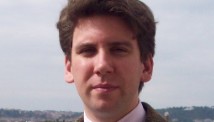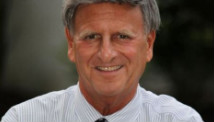PARIS: Wrestlers around the world on Wednesday vowed to fight to save the ancient sport's Olympic status, after the International Olympic Committee voted to drop it for the 2020 Games.
Japan and Turkey -- whose cities Tokyo and Istanbul are bidding to host the Games in seven years' time -- led the calls for the world body to reconsider, as an online petition was organised urging a rethink and gained thousands of supporters.
The president of the Turkish wrestling federation, Hamza Yerlikaya, called the decision, taken at the IOC executive board meeting in Lausanne, Switzerland, on Tuesday, "unfair" and a "mistake" that they would seek to overturn.
"To have the 2020 Olympics in Istanbul without wrestling is unthinkable," said Yerlikaya, himself a double Olympic gold medallist, three-time world champion and eight-time European champion in Greco-Roman wrestling.
"We won't allow it," he added.
In Japan, Yerlikaya's counterpart Tomiaki Fukuda said on his federation's website that he was "dissatisfied and baffled", echoing the views of the sport's world governing body, which called the decision "an aberration".
Wrestling will remain on the programme for the 2016 Olympics in Rio de Janeiro but faces a fight against seven other sports for inclusion at the Games four years later. A final decision is to be made when all IOC members meet in September.
Members are seen as unlikely to vote against the executive board, however, raising the prospect that one of the few sports that survived from the original Olympics in ancient Greece into the modern era will disappear.
Wrestling first appeared in 708 BC and has only ever been left out of the Olympic programme once before in 1900.
The International Federation of Associated Wrestling Styles (FILA) has vowed to fight the decision, while multiple medallists Russia and Iran have also said they hoped the IOC would backtrack.
"This issue will definitely be a big blow to the country's sport, as it is one of our country's most popular sports," the head of Iran's national Olympic commitee, Mohammad Aliabadi was quoted as saying in Iranian media, "I will certainly pursue the case."
IOC president Jacques Rogge meanwhile insisted on Wednesday that the vote -- by secret ballot -- was fair and said he understood the angry response from those involved in the sport.
A meeting was planned between the committee and the International Federation of Associated Wrestling Styles (FILA), to discuss the matter, he told a news conference in Lausanne.
Wrestlers have been left dismayed by the decision, with Japan's undisputed queen of the ring, Saori Yoshida, saying: "I am so devastated that I don't know what to do."
Yoshida, a 55kg-class freestyle wrestler who is the face of Tokyo's campaign for the right to host the 2020 Games, has won a record 13 straight Olympic and world championship gold medals over 10 years.
In India, Sushil Kumar, who won a bronze in Beijing and a silver in London last year, said: "I still can't get over the news that we won't be at the Olympics.
"All sportsmen look towards the Olympics as the pinnacle of excellence, everyone wants to take part in them. Now what do we do? Give up wrestling? I hope the IOC will reconsider this decision."
An online petition at change.org entitled "The International Olympic Committee: Save Wrestling as an Olympic sport #SaveOlympicWrestling" has also been mounted, urging the US Senate to take up the matter.
By late afternoon on Wednesday, it had more than 21,000 signatures.
On Twitter, one user, @WrestlersLoveUs, wrote: "Ancient Olympic wrestlers used to sometimes fight to the death. IOC better understand we're ready to do that again. #SaveOlympicWrestling."
-AFP/fl
















